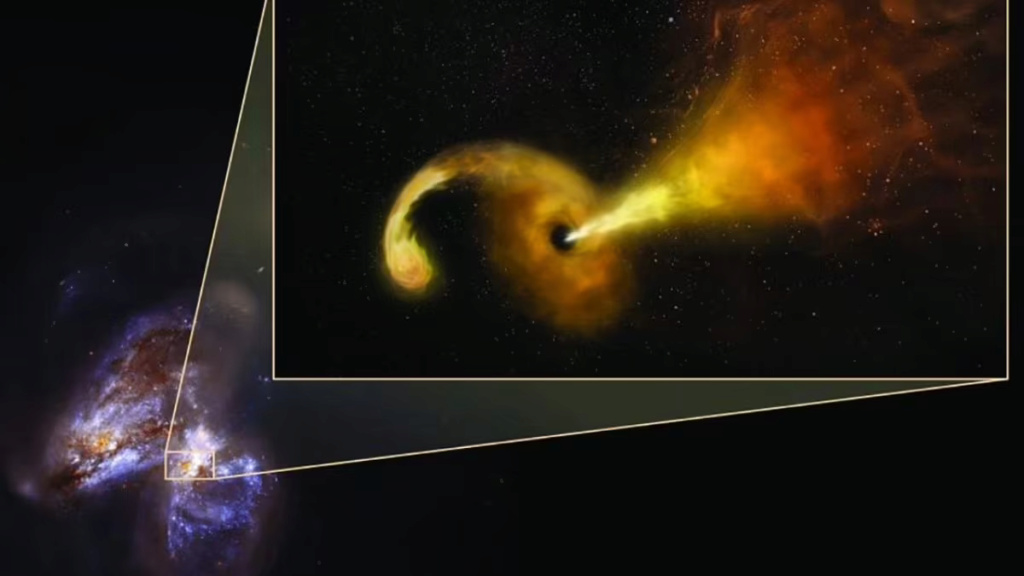A black hole spews out the remains of a star that it swallowed years
! ago in an accident like a burp
Astronomers have spotted a black hole spitting out the remains of a star it swallowed a few years ago in the form of mysterious lumps that seemed to burp.
The astronomical event began in 2018 when a black hole devoured a star, and two years later it released a burp of gigantic proportions. The delay between the cosmic meal and the ensuing plasma explosion surprised astronomers, and they aren't sure why it took so long.
In 2018, astronomers saw evidence of a black hole more than 650 million light-years away tearing apart a star in a so-called tidal perturbation event.
Then, in 2020, 2021 and 2022, another team of researchers led by Yvette Sendez at the Harvard-Smithsonian Center for Astrophysics in Massachusetts took another look using several radio telescopes.
Usually in tidal disturbance events, relative to the strong tidal forces acting on the star due to the black hole's gravity, the black hole's strong gravity rips a stray star very close, and then the remnants of the star are pulled into a halo of debris called the accretion disk before falling into the Black hole. Sometimes, this disc explodes in a mist of material shortly after the star is torn apart.
As the star approaches the hole of the black hole, the tidal forces of the hole begin to rip and stretch the layers of the star one after the other, after which the star turns, unfortunate, into a long, noodle-like thread that wraps around the black hole, forming a ball of hot plasma.
The movement of plasma around the black hole accelerates and spins like a massive jet of energy and matter, producing a bright flash that the optical telescope can detect with X-rays and radio waves.
Because of the way the star wraps around the black hole, this process is known as a spaghetti or macaroni effect.
In 2021, after the engulfing, a radio telescope from the state of New Mexico detected signs of unusual activity. The black hole then began spewing out the remnants of the star at half the speed of light.
Previously, black holes were observed swallowing stars, only to return and spit out again after that, but previous cases only occurred at the same time as the star was swallowed. While the researchers used four ground-based observatories around the world with two space-based observatories to record the event, and then published their results in The Astrophysical Journal on October 11.
“About two years after the tidal disturbance event, an unusually bright column of material suddenly began to explode away from the black hole at speeds up to half the speed of light,” says Cendez, an astrophysicist at the Harvard-Smithsonian Center for Astrophysics. There are several possible causes, she says, mostly related to the properties of the accretion disk, but none of them are entirely appropriate."
"Finding out exactly what happened may be especially important because these delayed eruptions can occur throughout the universe," she continues.
The latest event, which scientists have dubbed AT2018hyz, was remarkable and interesting not because the black hole delayed three years after swallowing the star to spit out its remnants, but also because of the speed of the plasma that exited the hole, as the plasma flies in tidal disturbance events usually by 10% The speed of light, but this time the stellar material ejected by the black hole reached half the speed of light.
The researchers are not yet sure why the blinking is delayed, but they believe such events may be more common than previously thought. Astronomers need to validate this hypothesis by reviewing sources for other tidal turbulence events, which were previously assumed to have ended, to see if they can see them flashing again.
Source :websites



